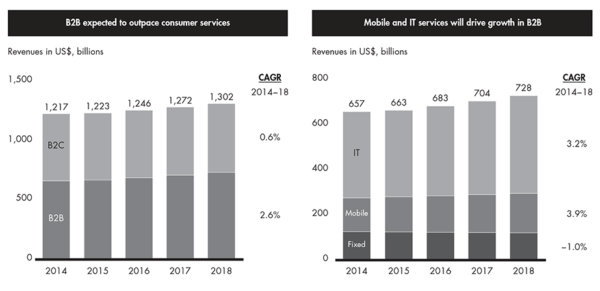Claim denials are an inescapable problem for hospitals and health systems throughout the country.
Healthcare organizations' annual losses from denial write-offs range from as little as 1 percent of net patient revenue to as high as 4 or 5 percent, according to Advisory Board. For an average 300-bed organization, 1 percent of net patient revenue can equate to $2 million to $3 million annually.
"One percent sounds like a small number, but it's actually a really concerning number when you think about the scale," says Jim Lazarus, managing director of strategy and innovation with Advisory Board's revenue cycle solutions division.
Mr. Lazarus says the troubling trend he hears about most from revenue cycle leaders is initial denials. There are organizations that see up to 15 to 20 percent of all claims come back with an initial denial when they first bill it, according to Advisory Board. That means these organizations have to rework or appeal one out of every five claims. Although many of these organizations are able to rework denied claims to lower write-off numbers, this rework costs staff, resources and time and is ultimately inefficient, Mr. Lazarus says.
"Organizations are struggling because they have so many denials that require devoted efforts. Beyond just the financial impact of denials, the rework prevents organizations from being able to be more successful in their revenue cycle and even in their work with patients because they have to keep addressing this issue," he adds.
What are the most common reasons for denials?
Demographic and technical errors are far and away the leading source of both initial denials and write-offs reported in Advisory Board's 2015 Revenue Cycle Benchmarking Survey. These errors could include a missing modifier, having the wrong type of plan code or not having the patient's Social Security number. According to the survey, 61 percent of initial denials are due to demographic/technical errors, followed by eligibility (16 percent) and medical necessity (12 percent). Forty-two percent of denial write-offs are due to demographic/technical errors.
The survey also found that more than half of all denials (54 percent) are now attributable to commercial payers, much higher than reported 2013 rates (43 percent). Additionally, anecdotal reports also suggest these payers carry more complex requirements than government payers, creating more work for teams that follow up on denials.
How can organizations work to reduce denials?
1. Change the paradigm in denial management. Organizations try to solve the issue of claims denials by deploying additional staff and communicating with their payers. But Mr. Lazarus encourages organizations to make a fundamental shift to proactive denial management. He says hospitals and health systems must focus on preventing denials by deploying technology to automatically and proactively flag claims likely for denial and address these claims before they are submitted. Combined with better communication with payers, this can help healthcare organizations to drastically reduce denials.
"We simply can't keep up with the increasing volume of denials and adding more bodies to chase denials reactively will never be successful. Instead we need to focus on deploying technology to supplement the EHR or the patient accounting platform," says Mr. Lazarus. "Organizations have to be able to flag, stop and prevent the very errors that will cause denials. When organizations do that, it can significantly reduce the volume of denials to which they need to respond and have a very positive impact on cost-to-collect and net revenue capture."
2. Use predictive analytics. Organizations can use predictive analytics to anticipate which claims a payer is likely to deny and why. This allows hospitals and health systems to provide the information the payer needs before the payer has a chance to deny the claim. "Organizations really have to be deploying those capabilities and leveraging them to really change the paradigm because in the end these technologies are cheaper than solving the problem through staff or seeing net revenue losses mount up as they struggle with denials," Mr. Lazarus says.
T. Scott Law, founder and CEO of Zotec Partners, agreed. Organizations should know the likelihood of getting denied before submitting a claim. For instance, if the insurer requires a referring provider, then the provider knows the claim will be denied if that requirement is not met. Although larger systems may be able to do some denial predictive analytics, smaller organizations may need to rely on revenue cycle management partners and technologies that give them the ability to filter and consolidate these data to reduce claims denials.
After overcoming friction in the claims denials process, providers will likely have to collect money from the patient, making it vital that providers are aware of the patient's proclivity to pay, according to Mr. Law. "When these predictive analytics come into play, providers can tailor revenue cycle interactions to minimize friction in collecting payments," he says. Providers should avoid investing their resources and dollars on those patient accounts that are predicted to pay, according to Mr. Law.
3. Invest in relationships with payers. Mr. Lazarus notes that some providers are aggressively negotiating with payers to get rid of contract requirements that frequently lead to denials that are overturned on appeal.
Some organizations are sophisticated enough to access and leverage data needed for lobbying payers to remove rules leading to frequently overturned denials. "Denials are meant to keep providers in line to be reimbursed what is owed and the best organizations are changing contracts to make that happen. Everyone should be examining this, but not every organization is in that position," Mr. Lazarus says.
4. Focus on quality of patient data. Mr. Law notes that denial occurs when the carrier can't identify the patient. Therefore, providers must ensure they have policy numbers and names spelled correctly so things line up in the payer's system. According to Mr. Law, there are approximately 350 data elements in a claim, and errors in any element represent a potential denial.
Source: Becker's Hospital Review (View full article)











